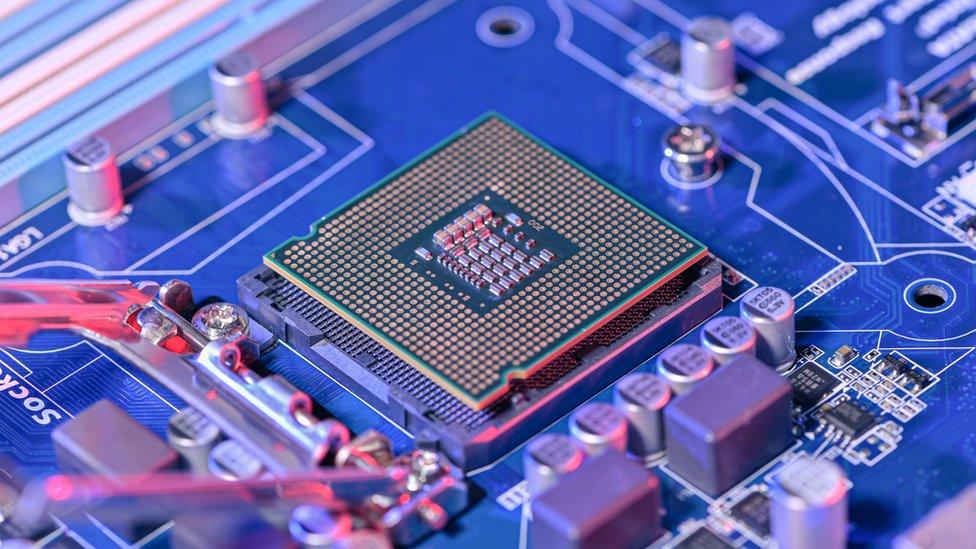### Understanding Semiconductors and the Rationale Behind Trump’s Targeting
In recent developments, former President Donald Trump has announced plans to impose tariffs on semiconductor imports, which are integral components in the architecture of modern electronics. Semiconductors, sometimes known as microchips or integrated circuits, consist mainly of silicon and are essential in powering a multitude of electronic devices ranging from smartphones and laptops to vehicles and medical equipment. Their significance extends beyond just consumer electronics—they serve as pivotal elements in the infrastructure that supports global connectivity, including routers and communication systems.
### What Are Semiconductors?
Semiconductors function as controllable electrical switches; they can either conduct electricity or act as insulators depending on how they are treated. This property is what allows them to process binary code, which is fundamental to computing technologies. Common applications include electronic control systems in cars, sensors, and implantable medical devices such as pacemakers. The global reliance on semiconductors highlights their importance in various sectors, including renewable energy, where they contribute to operations in wind and solar power systems.
### Global Semiconductor Production Landscape
The production of semiconductors is not confined to one region. Currently, Taiwan is a significant player in the semiconductor market, with the Taiwan Semiconductor Manufacturing Company (TSMC) supplying over half of the global demand. TSMC provides chips for tech behemoths such as Apple, Microsoft, and Nvidia and has found itself embroiled in geopolitical tensions, often referred to as the “chip wars,” particularly between the United States and China. South Korea’s Samsung is another leading supplier in the industry, emphasizing the competition among nations for semiconductor supremacy.
### Trump’s Tariff Intention
Trump’s push for tariffs on semiconductors reflects a larger economic strategy aimed at stimulating domestic manufacturing. By imposing tariffs, his administration intends to encourage companies to produce goods, including semiconductors, within the United States rather than relying on imports from places like Taiwan and China. Recently, the White House exempted several electronic goods, including smartphones and laptops, from high tariffs on Chinese imports; however, Trump has hinted that semiconductors could soon face new tariff rates.
“We want to make our chips and semiconductors and other things in our country,” he reiterated during a discussion on Air Force One. Alongside economic motivations, Trump’s administration has pointed to national security issues related to semiconductor sourcing—citing vulnerabilities associated with foreign dependency on microchip supplies. He indicated an upcoming investigation that would delve into these concerns.
### The Future of Semiconductor Production in the U.S.
To enhance semiconductor production domestically, significant financial investments have been made. Recent initiatives include the U.S. Chips Act, which incentivizes companies to establish manufacturing operations within the country. This legislation has already attracted companies like TSMC, which has initiated plans for a factory in Arizona, receiving considerable federal backing of $6.6 billion for its establishment. Nonetheless, challenges such as a shortage of skilled workers have impeded progress, which TSMC addressed by relocating workers from Taiwan.
Increasing domestic production capabilities thus poses multiple challenges, including labor shortages and technological infrastructure. Without addressing these hurdles, the ambition to elevate U.S. semiconductor manufacturing might fall short.
### Conclusion
Semiconductors are not merely components of electronic devices; they embody a critical nexus of economic, technological, and national security interests globally. Trump’s strategy to impose tariffs underscores an approach that sees the semiconductor supply chain as a matter of strategic importance. As international dynamics evolve—especially concerning U.S.-China relations—the production and sourcing of semiconductors will remain at the forefront of economic and political discourse. With targeted tariffs and legislative support, the U.S. aims to position itself favorably in an increasingly competitive global landscape.











